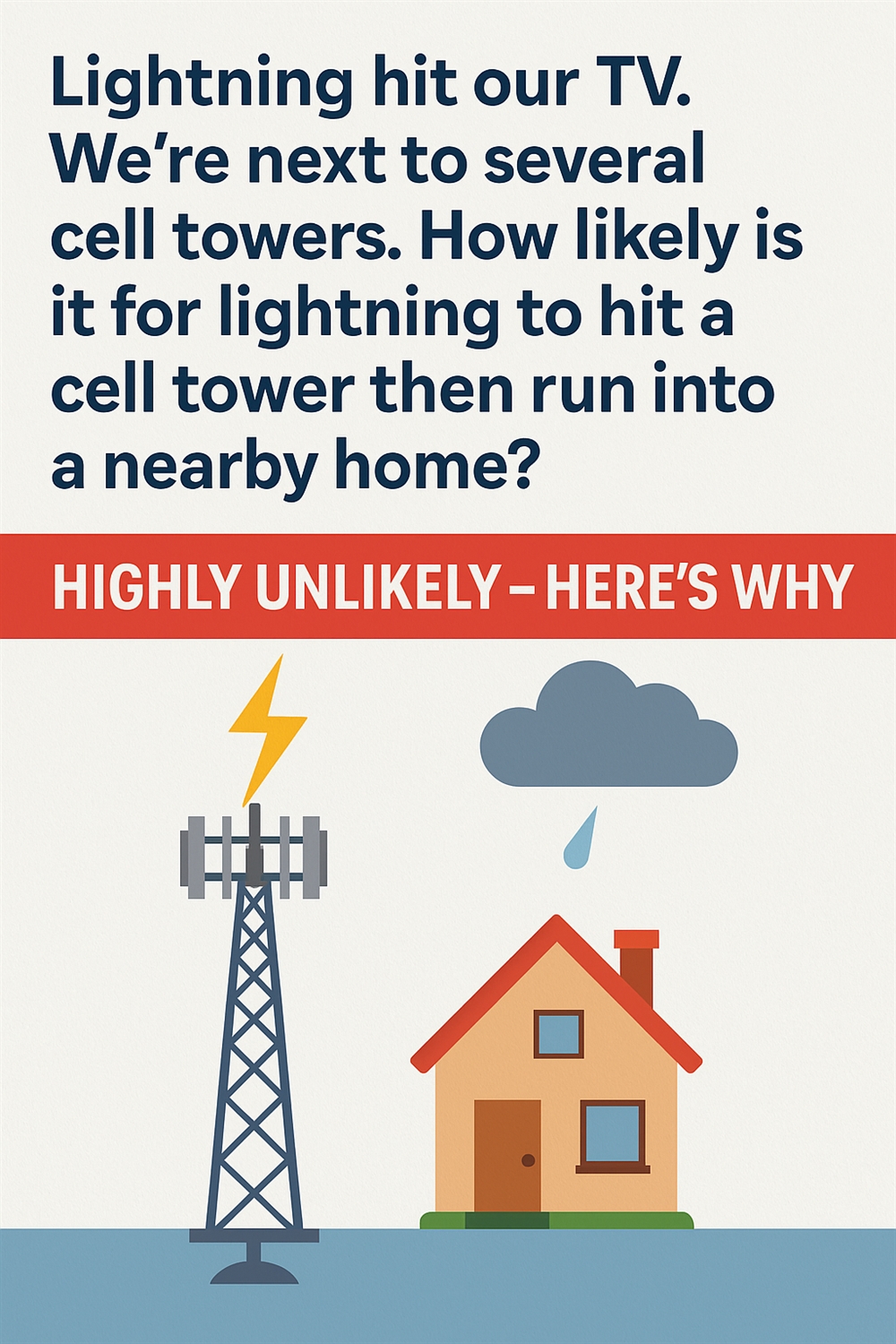Answer

Jul 10, 2025 - 03:13 AM
Cell towers are designed to safely handle lightning strikes. In fact, due to their height and metal structure, they are frequent lightning targets—but they are equipped with specialized grounding and lightning protection systems that direct lightning energy safely into the ground. These systems include:
-
Lightning rods
-
Grounding rings
-
Copper or galvanized steel down-conductors
-
Low-impedance ground rods
The purpose of these systems is to prevent lightning from damaging the tower’s electronics or spreading into nearby structures.
Can Lightning Still Affect Nearby Homes?
Yes—but not directly through the tower. More likely causes include:
-
Ground Potential Rise (GPR): A lightning strike can momentarily raise the electrical potential of the soil around the tower. In rare cases, this can lead to current flowing into nearby structures through improperly grounded utility lines or shared metallic paths (e.g., cable TV or electric lines).
-
Backdoor Surges: If your TV was damaged, it’s more likely due to a surge traveling along a cable line, satellite dish, or power line, rather than a direct strike via the tower.
-
Proximity Effect: If your home is the tallest point nearby—or lacks adequate surge protection—it can be hit directly or suffer damage from induced voltages in wiring due to a nearby strike.
Best Practices for Nearby Homes:
-
Install whole-house surge protectors at the main panel.
-
Use point-of-use surge protectors for TVs, computers, and sensitive electronics.
-
Ensure proper grounding of all cable and satellite lines.
-
Consider consulting an electrician for a lightning risk assessment if you’re in a lightning-prone area.
Summary:
While lightning can and does hit cell towers, the risk of it then "running into" a nearby home is extremely low—unless there are grounding or surge protection issues on the property itself. The more likely culprit is a surge via power or signal lines during a nearby strike.






Add New Comment